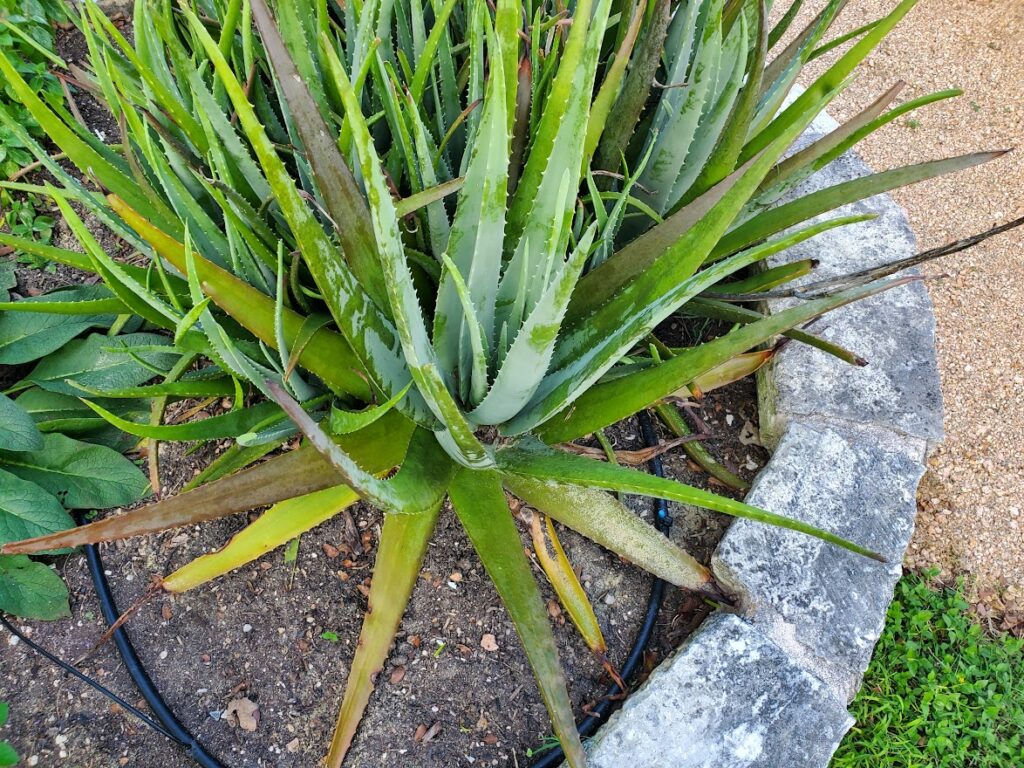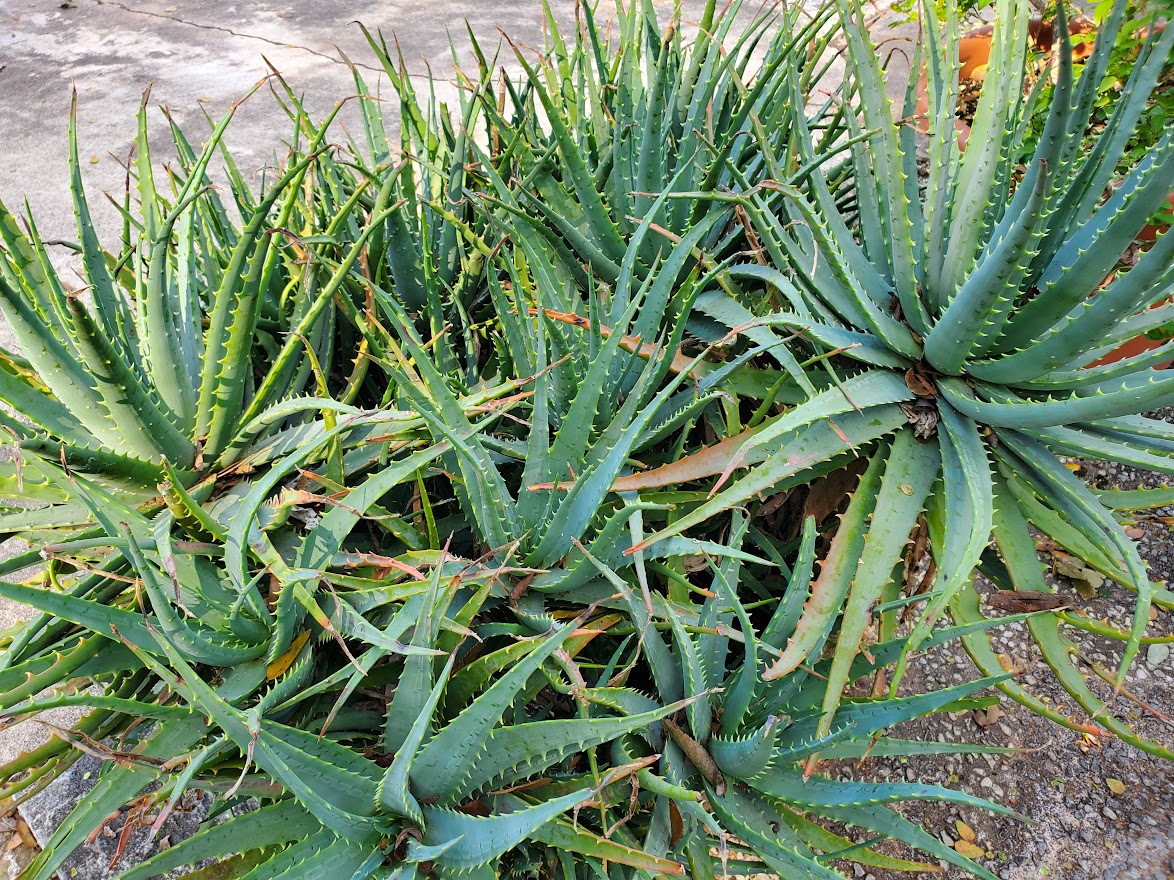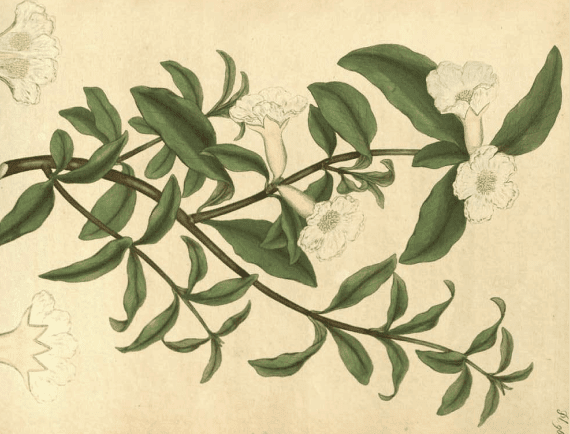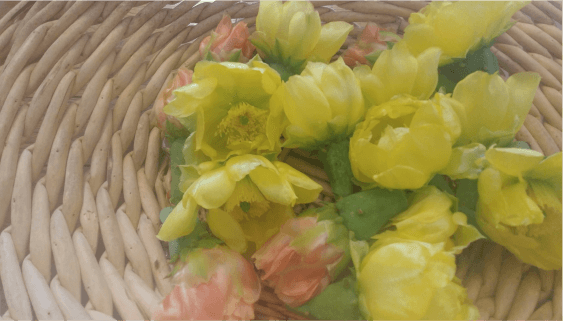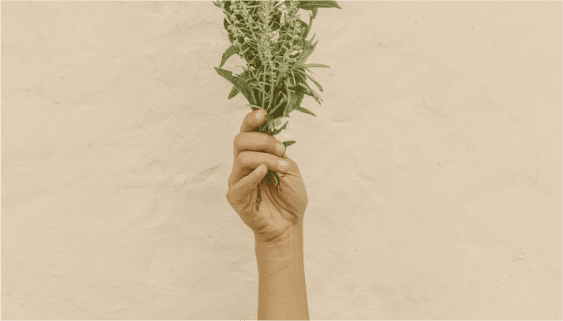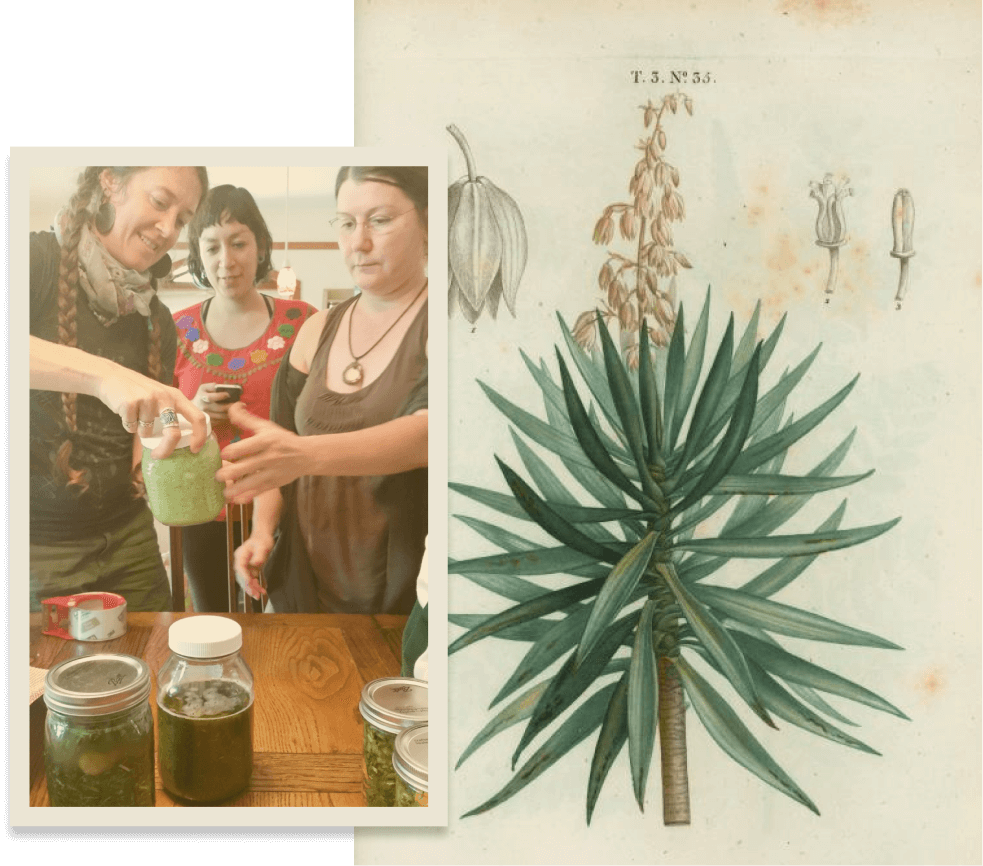Aloe, also known as lily of the desert
From the word alloah meaning bitter
Family: it is Listed as being in several families, most commonly Aloeaceae,
Description: Aloe is a Perennial, stemless, succulent plant (meaning its leaves hold large quantities of water). These leaves are thick and fleshy with small serrations along their edges. The flowers come from within the basal leaves, and shoot up a cluster of flowers that can vary in color from red to yellow. In Texas this plant gets about 1-2 feet tall, depending on the species and spreads through rhizomes
Where it grows/garden: Aloe is a native of Africa. It does extremely well in Texas with very little water, prefer the shade, does not like to freeze, or be moved around a lot. Due to freezing temperatures in Central Texas, , it does best in pots and will thrive easily with very little care.
Harvest: The leaves are most often harvested for medicinal uses. They can be used year round.
Historical Use: The first written document on aloe’s use was in Egypt around B.C.E. 1550. shows twelve formulas for mixing Aloe with other agents to treat both internal and external human disorders. According to the Greek physician Dioscorides attributed to its juices “the power of binding, of inducing sleep.” He noted as well that it “loosens the belly, cleansing the stomach.” He further added that this “bitter” Aloe (the sap) was a treatment for boils; that it eased hemorrhoids; that it aided in healing bruises; that it was good for the tonsils, the gums, and all general mouth irritations; and that it worked as a medicine for the eyes. Dioscorides further observed that the whole leaf, when pulverized, could stop the bleeding of many wounds.
How it is used Today: Aloe has constituents that case it to act as an antibacterial, antifungal, spermicidal, antiviral, and has emollient, and lends to its use in skin healing remedies and cosmetics. The juice of Aloe vera is taken internally for constipation and to soothe ulcers, arthritis, and colitis. A fresh leaf or the juice of Aloe vera is applied for burns, sunburn, poison oak and wounds. As a skin emollient, aloe vera is often an ingredient in many cosmetics.. Herbalist Christopher Hobbs warns against using the layer just beneath the leaf skin where most of the laxative components lay, and to stick with the inner gel. According to the physician Cook All varieties of aloes are stimulating to the large intestine, acting slowly but very positively, yet not procuring very liquid stools as well as helpful in bringing on the menses. In Ayurveda, the plant is not only used to help soothe digestion, but also soothe menstrual difficulties associated with excess heat and dryness
Preparation: Fresh is best, No matter the claims, no store bought gel compares to the properties of fresh Aloe Vera and it does not work for long after being cut. You may be able to make a cut piece last a day or so by wrapping it well with cellophane and storing in the refrigerator.
Clinical Use: One of my favorite uses of aloe leaf gel is in a paste mixed with clay and put onto poison ivy and other rashes. I also have clients use a tblspn in smoothies in the morning when they are constipated. It can be contraindicated in pregnancy so always check with your healthcare practitioner before using.
